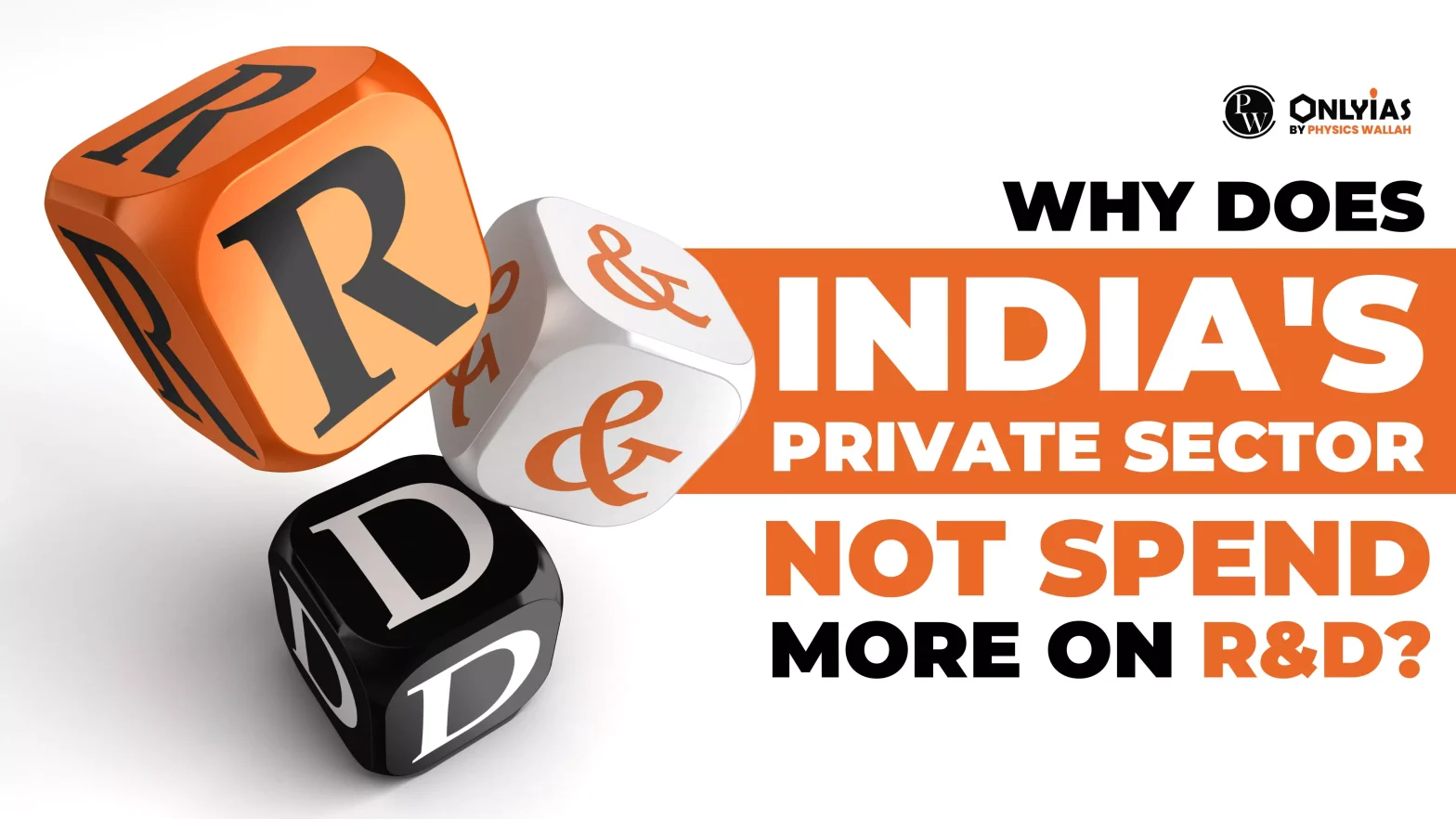India’s R&D expenditure is notably low compared to other countries, despite growing government investments. As recently highlighted by the Finance Minister, the private sector needs to increase its R&D spending. In developed countries like the U.S., the private sector plays a more active role in funding R&D compared to government contributions, a trend that contrasts with the current situation in India.
What is R&D?
Research and Development (R&D) involves the process of innovating and creating new products and technologies. It serves as the engine of innovation by identifying and addressing needs or problems.
For example, if people desire a mobile phone with a battery that lasts more than five days, R&D teams will investigate and develop new materials or technologies to make this possible.
- Current R&D Expenditure in India:
- Despite the general consensus on the need for more R&D to foster faster and more effective progress, India’s R&D investment remains low as compared to other countries.
- The World Bank data reveals that India’s R&D spending as a share of gross domestic product (GDP) is about 0.65%, significantly lower than Taiwan (3.6%), South Korea (4.8%), China (2.4%), and Brazil (1.2%).
Enroll now for UPSC Online Classes
- Aspirations vs. Current Position:
- Countries with higher per capita incomes typically invest more in R&D. Given India’s lower per capita income, its R&D spending aligns with global averages for its income level.
- In simple words, when compared to countries with similar per capita incomes, India’s R&D spending is comparable. However, India’s aspirations extend beyond its current position.
- Thus, with goals of achieving significant economic growth—potentially 20 to 30 times its current size—alongside inclusive development, investing in R&D becomes crucial. This focus on future aspirations rather than just the present situation highlights the need for increased R&D investment to drive innovation and support long-term growth.
- Government vs. Private Sector R&D Spending:
- The Indian government has increased its R&D expenditure, which now accounts for over 60% of the total R&D spending in the country. However, this funding primarily focuses on defence, space, agriculture, and nuclear research, with significant portions directed to academic institutions.
- However the private sector remains underrepresented and investment instead of being more is decreasing.
- Decline in Private Sector R&D Investment
- The business sector’s contribution to total R&D spending in India has decreased from approximately 45% in 2012-13 to 40% in 2020-21.
- This decline raises concerns about why Indian businesses are not investing more in R&D, especially given India’s market-based economy.
- Private companies often base their R&D efforts on immediate market needs, working on innovation and developing products that align with current demands.
- Several factors contribute to this reduced investment:
- Lack of Incentives: R&D tax deductions, particularly for micro, small, and medium enterprises (MSMEs), are perceived as inadequate. The current 100% R&D tax deduction offers minimal benefits to MSMEs due to their low profit margins, resulting in little motivation to invest in R&D.
- Intellectual Property Protection Issues: MSMEs face challenges in protecting their innovations. The patent process is complex, and legal disputes can be prolonged, making it easier for larger companies to exploit MSME innovations. This discourages MSMEs from investing in R&D.
- Bureaucratic Hurdles: Accessing tax incentives involves significant paperwork and certification, which can be burdensome for small companies. The high transaction costs and administrative challenges often outweigh the benefits, leading to reduced R&D investment.
- Competitive Forces: A significant reason for low R&D spending is the lack of competitive pressure. In an environment where domestic markets are protected by high tariffs and non-tariff barriers, firms face little incentive to innovate.
- For example, if the government imposes a 100% import duty on laptops, making foreign laptops prohibitively expensive, domestic laptop companies would dominate the market without facing competition from abroad. In this scenario, domestic manufacturers may lack the incentive to innovate, as they would benefit from a guaranteed market and have no pressure to improve their products.
- Exposure to global competition, however, typically drives firms to invest in R&D to remain relevant and competitive; without such pressure, they risk falling behind and losing their competitive edge.
- Economic Structure and Market Presence: Indian firms, particularly in manufacturing, often operate on a smaller scale in global markets, which limits their need for extensive R&D.
- Even in the IT sector, where companies like TCS and Infosys have a significant global presence, the primary focus on business services rather than product innovation restricts the benefits of in-house R&D.
Check Out UPSC NCERT Textbooks From PW Store
Conclusion
Even resource-rich countries such as Indonesia (0.28%), Mexico (0.3%), South Africa (0.6%), and Malaysia (0.95%) spend a relatively low share of GDP on R&D. This suggests that R&D investment is influenced not merely by per capita income but also by a combination of economic structure and exposure to competition. While government spending on R&D has increased and plays a crucial role, enhancing private sector R&D will require creating a more competitive market environment and addressing structural and cultural barriers. Increased exposure to global competition and more robust incentives could drive higher private sector investment in R&D, ultimately contributing to India’s long-term economic growth and innovation.
![]() 6 Sep 2024
6 Sep 2024

